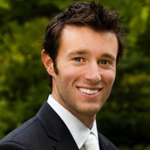Robert G.
$1,000 Resolve to Evolve Scholarship Winner

Then I asked: Does a firm persuasion that a thing is so, make it so? He replied: All poets believe that it does, and in ages of imagination this firm persuasion removed mountains; but many are not capable of a firm persuasion of anything.
-- William Blake, poet
Although bridging the financial and accessibility gap for thousands of aspiring college students is critical to creating a more educated nation, these policy initiatives championed by President Obama fall short in addressing an antiquated education system that is wrought with grander systemic and philosophical problems. I would thus propose two immediate strategic improvements, both with a myriad of tactical implications.
First and fundamental to my proposed improvements to the US education system is the idea that to maximize human learning we must first understand the brain science behind how humans actually learn. Never before has there been a nexus of education and brain science; the leading brain researchers and education practitioners at all levels don’t even have a platform in which to converse, let alone collaborate over the long term.
The consequences of such isolation can best be summed up by acclaimed molecular biologist John Medina when he observed that, “if you wanted to create an education environment that was directly opposed to what the brain was good at doing, you probably would design something like a classroom.” I would be so bold as to call for not only the inter-disciplinary collaboration among education providers and brain scientists, but also architects, technologists, and policy makers to adequately redesign the education process. These distinct subject matter experts must collaborate in a meaningful way, as a starting point for the redesign of our education system, and one can assume that this cross-pollination of expertise might very quickly alter education as we know it.
An example of demonstrated brain science-in-action and interdisciplinary collaboration is worth noting. The SEED School (www.seedfoundation.com) in Washington DC understands that the human brain isn’t assumedly wired to be engaged in learning, but rather it is first interested in safety. Thus, if a child or teenager suffers from the ongoing stress of living in an unsafe, unstable environment, research shows that learning will be extraordinarily difficult for that student
SEED School has solved this problem by integrating a rigorous academic program with a safe and secure boarding program, creating an environment from which learning can best occur. Even while located in a notoriously dangerous neighborhood in Washington DC, this inner city boarding school model provides a holistic solution to the challenges facing urban youth by enabling teachers to support students in their development in all disciplines within the liberal arts tradition. SEED School’s success has been astounding, with 97% of their highschool graduates having been accepted to college and 90% immediately enrolling!
The second proposal I would advocate would be to invest in freedom, not fear. This concept, currently being heralded by some of the world’s most innovative companies, calls for the destruction of bureaucratic hierarchy as a relic of modernity. By abandoning the command-and-control model of leadership, companies such as Zappos.com have proven to cultivate increased innovation, efficiency, and happiness among their workforce, while delivering superior products to a delighted customer base millions strong.
Conversely, the US education system is deeply immersed in a fumbling bureaucracy that is delivering a decidedly inferior ‘product.’ Our public schools propogate fear, not freedom, and it is time to create educational cultures that awaken the innate creativity and greatness of both students and teachers alike. Thus, investing in freedom means re-architecting both the administrative structures providing education, as well as the classroom experience itself. Sir Ken Robinson, one of the leading thinkers on creativity, adds his thoughts by proclaiming, “[students are] educated to become good workers, rather than creative thinkers. Students with restless minds and bodies, far from being cultivated for their energy and curiosity, are ignored or even stigmatized, with terrible consequences. We are educating people out of their creativity.”
In closing, the challenge of creating the most educated nation in the world over the next decade lies achievable before President Obama and, more importantly, the American people. By bridging the gap between the ivory tower science of brain development and the day-to-day experience of teachers, we can hope to recreate an educational system that is most conducive for human learning. Further, investing in freedom, not fear, will release the innate creativity and learning capacity that is inherent in both teacher and student. Creating a firm foundation of intellect, or ‘a firm persuasion’ as William Blake puts it, is essential to the promise of our nation’s future, and indispensable in inspiring again an age of imagination that can truly move the mountains in our midst.

